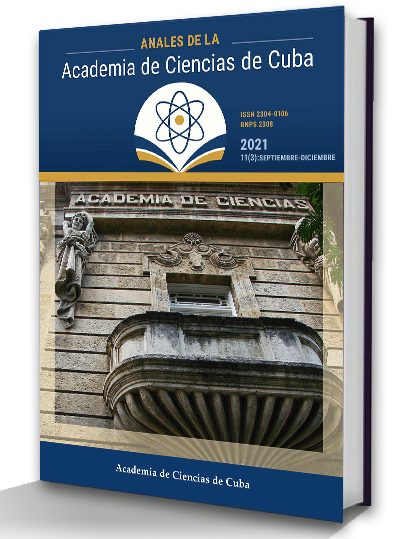From synthetic to Cuban natural clays: pharmaceutical and environmental applications
Keywords:
drugs, dyes, slow release, clay, adsorption, environmental safetyAbstract
Introduction: The efficient employ of clay and clay minerals with pharmaceutical and environmental applications has been widely discussed in the literature. However, their capability to host and release a drug in a specific site, their potentiality to adsorb complementary antibiotics as well as chemical species of big molecular size and variety of functional groups have not been reported as far as we know.Methods: The clay-organic molecule (drugs and dyes) interaction experiments were performed in liquid phase. The concentration of organic chemicals before and after the interaction was followed by UV-visible spectroscopy. Both, the raw material and the resulting composite materials were characterized by X-ray diffraction (XRD) and Fourier transform infrared spectra (FT-IR) in transmittance mode. Computational simulations were made using Density Functional Theory (DFT) and Molecular Dynamics (MD).
Results and discussion: The drug or dye load (mg) per gram of material was quantified. For both, the release kinetics as a function of dissolution pH and the desorption kinetics was evaluated, based on its application. The structural stability of the composite materials and the functional groups of the organic molecules in their interaction with the clay were demonstrated. The release and desorption depend on the strength of the clay-organic specie interaction. The simulation results were coherent with those obtained experimentally. Conclusions: the capability of the materials to adsorb and release drugs in a controlled manner, in compliance with the pharmaceutical standards, has been experimentally demonstrated. The potentiality of Cuban natural clays was confirmed in terms of environmental remediation, as efficient carriers of emergent and persistent contaminants. The useful combination of theoretical calculations has shed light on the nature of the clay-drug interactions.
Downloads
Downloads
Published
How to Cite
Issue
Section
License
The journal Anales de la Academia de Ciencias de Cuba protects copyright, and operates with a Creative Commons License 4.0 (Creative Commons Attribution-NonCommercial License 4.0). By publishing in it, authors allow themselves to copy, reproduce, distribute, publicly communicate their work and generate derivative works, as long as the original author is cited and acknowledged. They do not allow, however, the use of the original work for commercial or lucrative purposes.
The authors authorize the publication of their writings, retaining the authorship rights, and assigning and transferring to the magazine all the rights protected by the intellectual property laws that govern in Cuba, which imply editing to disseminate the work.
Authors may establish additional agreements for the non-exclusive distribution of the version of the work published in the journal (for example, placing it in an institutional repository or publishing it in a book), with recognition of having been first published in this journal.
To learn more, see https://creativecommons.org






